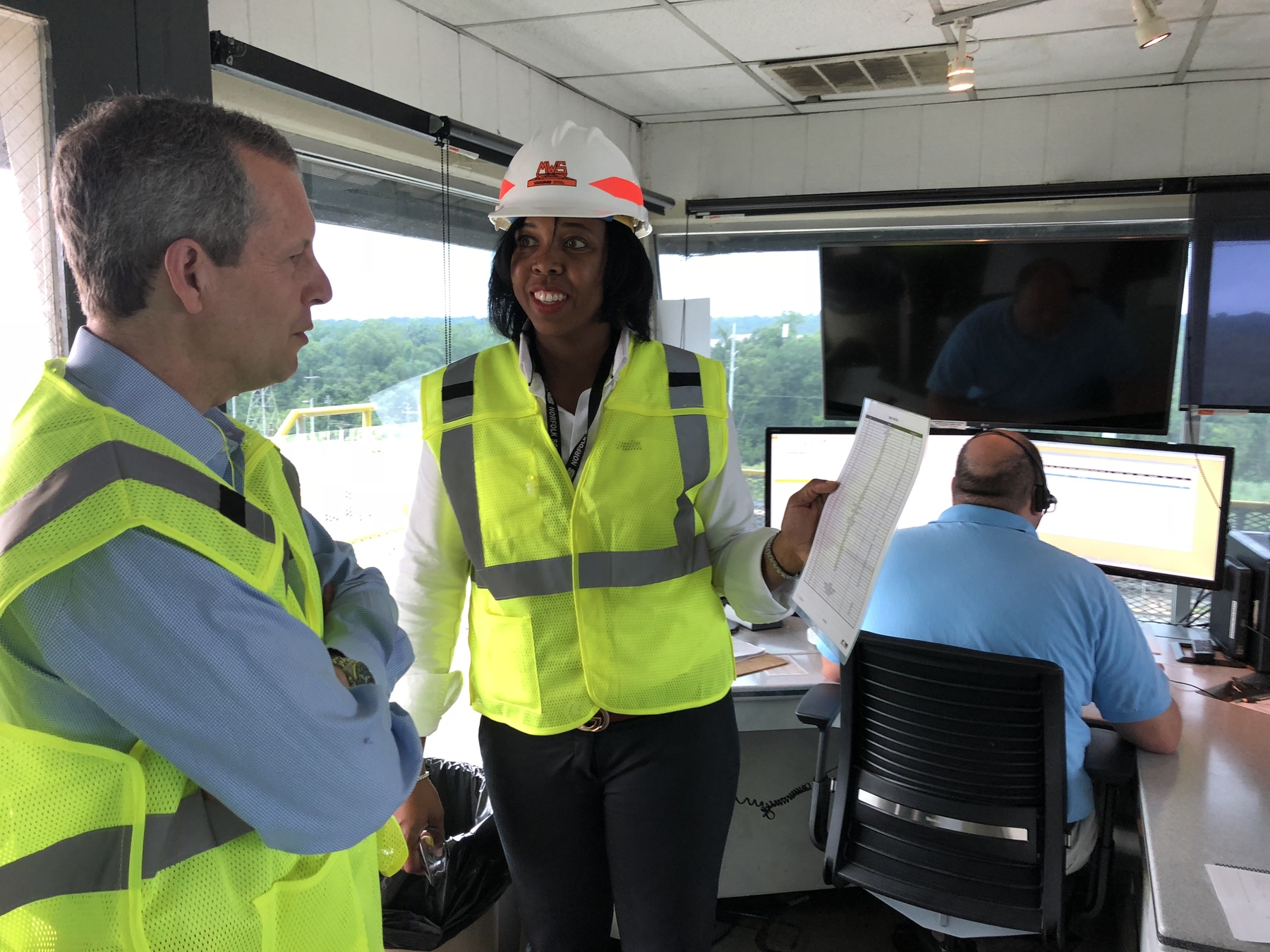
Norfolk Southern CEO Jim Squires retired over the weekend, passing the baton to new NS President Alan Shaw effective May 1. Squires, who became chief executive in 2015, had an eventful tenure at the helm. Under Squires’ watch, NS fended off unwanted merger advances from Canadian Pacific, pared its Triple Crown RoadRailer service amid the decline in coal volume, shook up its management team, adopted a Precision Scheduled Railroading operating model, lost more traffic than any other Class I railroad during the pandemic, moved its headquarters to Atlanta, and has suffered service problems since late 2021 due to a shortage of train crews. Trains spoke with Squires last week. The conversation has been condensed for brevity.
Q. Technology and sustainability really came to the forefront during your years as CEO. What does that mean for NS today and what does this mean for the years to come?
A. The industry has always been on the cutting edge technologically. Going back to its earliest days, we were a technology pioneer. So there’s nothing new in a sense. But we are trying to cast ourselves forward as an industry using technology, and preparing to compete in a marketplace that someday will include driverless trucks and electric vehicles. So we’re really trying to think long term about our place in the transportation ecosphere, and make sure that we’re technologically equipped to compete given the changes and the competitor dynamic that are coming. So that’s a big motivator.
This obviously includes automated train operations at some point. Time will tell when. One person crews, that’s an interim measure. And of course, that has to work its way through the collective bargaining process, as well as around the regulatory gauntlet. But that’s going to happen eventually. It feels to me as inevitable as crew consist change in the aftermath of dieselization. So that’s a big piece of this.
But technology doesn’t stop there. We’re also automating inspections. That’s an area that’s ripe for automation, using machine vision technology. And the advantages for safety are manifold. I see a lot of upside and a lot of opportunity for automation of mechanical and track inspections. The camera can see things that are going on with track structure, the geometry of the track, with the surface of the rail, with the ties, that a human inspector simply can’t see. We will see major improvements in safety and productivity in the future, thanks to technology.
Sustainability, and reduction of carbon emissions in particular, has become top of mind. And so it’s something that our customers want and expect of us. It’s something that regulators like the Securities and Exchange Commission increasingly are looking for. It’s something that our investors are insisting on. The business imperative for it is stakeholder pressure and stakeholder concern. We want to do it because it’s the right thing, and it’s good for business.
In order to hit our carbon reduction goals, we as an industry need a new locomotive era. Eventually the industry will have to adopt a new paradigm for a road locomotive. Now, we could end up with one paradigm as the next generation switcher, and another as the next generation road locomotive.
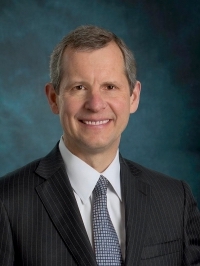
Q. You’ve said the operating ratio should be one of just many financial metrics used to judge a railroad. But Wall Street seems to remain singularly focused on the OR. What impact does that have on NS and the railroad industry, and how does it shape how a CEO’s decisions are made?
A. I really do think that financial performance as measured by the investor, and therefore by management and boards of directors, is a multifaceted problem. You look at margin, which is O.R. You look at return on capital. That’s a very important metric in a capital-intensive industry like ours. You look at free cash flow, which is also important to investors. And then from there, there are a host of different metrics that you have to analyze in order to appreciate the financial performance of a company holistically.
Now, it’s true that investors and management teams have for some time viewed margin/operating ratio as preeminent among those metrics. There’s nothing wrong with that. Hey, if you’re running a business, you want to be more profitable. And that’s basically what margin improvement is, it’s an increased operational profitability. That’s a fine goal. But not if it crimps the ability to grow the top line, and the bottom line, and the return on capital, and the free cash flow long term.
So it is a balancing act, because you always have to ask yourself, “What will be the impact of actions today on the company’s financial performance in the future?” It has been a worthwhile, successful strategy to make the operating ratio preeminent among financial performance metrics. But there’s a limit. At some point the industry will have to pivot to growth, and the top line will lead the way. That’s what we believe at Norfolk Southern, and I think we’re not alone in the industry.
Q. Is it also a balancing act to deal with Wall Street’s focus on quarterly performance? You’re in an industry where you have to make decisions that sometimes are measured in decades in terms of capacity projects, or locomotive purchases. Is there a tension in there, and so you have to balance those?
A. There is a lot of pressure, and there is a lot of accountability, when you have to report your earnings four times a year. I think there’s a positive side to that that you really hear about. You’re held to account as the manager of the company. You get a report card four times a year. And your performance, in investors’ minds, is also measured daily in the stock price of the company. That’s daily feedback. And the quarterly earnings reports are quarterly feedback. Feedback is a gift, as is often said.
So while there certainly can be pressure if the company is perceived to be underperforming, there’s also a lot of positive information that flows back from investors. And I’ve learned many valuable lessons from investors. There’s a portfolio manager who invested in the railroads for years. We were talking about diversification. And the question was, should railroads today do as railroads have often done in the past, which is to look for opportunities to diversify outside our core business of hauling freight long distances. Trucking, logistics, and warehousing would be possibilities for such diversification today. As you know, being a railroad historian, if you go back far enough in time, railroads were into commercial real estate, and natural resources, and barges, and airlines, and trucking companies, and hotels. So there was a lot of diversification going back in time. Anyway, this man’s perspective was, “If I want to own a trucking company, there are lots of fine trucking companies I can invest in. I don’t need you to do it for me. You do what you do well, and then I as the investor will make the decision whether to own your stock or not. But if you take on something that is outside your core expertise, you’re running a big risk that I as your owner and your investor don’t necessarily want you to take. I can do that myself.” That always stuck with me. And that’s the kind of valuable feedback that you get from people who own your stock.
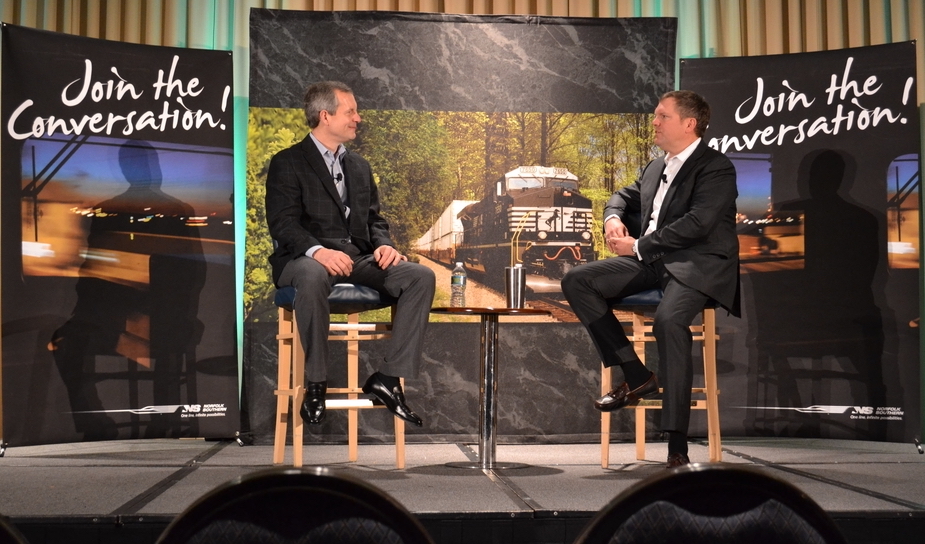
Q. As you hand the reins off to Alan Shaw, what’s your hope for NS?
A. The company’s in very good hands with Alan at the helm. He’s obviously a seasoned and experienced railroad executive who has seen the operation from multiple angles. Of course, the majority of his career was in the marketing area. But he has also spent time in the finance organization of NS. He actually started his career as a financial analyst. And right now he’s getting a heavy dose of operations. Operations is his top priority as we try to improve customer service, and get back to where we and our customers want us to be in terms of service. But he’s spending a lot of time in the field really drinking heavily from the operations wellspring. So with his experience with his reputation amongst customers, investors, and other stakeholders, he’s just the right person to lead the industry. And I want him to be bold, and to take risks, and to not be afraid to change the company. The world’s always changing around us, and so we have to be ready to change too.
Q. Speaking of service: Right now regulators aren’t happy, customers are not happy, labor’s certainly not happy, and railroad executives aren’t happy with the performance of the industry either. How did the industry get here? And how can it mend fences with customers and employees and regulators and get service fixed?
A. Well we don’t have enough crews right now. That’s really the crux of the problem. I’ve seen this several times in my career, and it’s unfortunate. And one of the challenges that I leave Alan and the rest of the executive team is to smooth out some of those peaks and valleys. I don’t think it will be possible to calibrate resources to just the right level of demand, since demand itself is volatile and unpredictable. And we are responsible for maintaining a prudent level of resources. But that includes not having excess resources, too. So it’s a formula that’s very difficult to solve. We must do better. We must figure out a way over the long term to calibrate our resources to foreseeable demand so that we don’t produce these big swings in customer service.
How did we get to where we are today? I look back to the middle of 2020, when we saw a very steep drop off in demand, due of course to the pandemic and the economic shut down during that period. The level of decline in our volume and revenue for a short period in 2020 was every bit as steep as occurred in 2009 during the Great Recession. During the Great Recession, it actually took longer to come back. So we did what we felt was prudent and responsible as business people. We cut back in 2020 as we saw that unfolding.
And just to put an exclamation point on it, we were running liquidity scenarios wondering if we would have enough cash. And we didn’t know — neither did anybody else — where this was all headed. So, we were asking ourselves, “OK, are we going to have enough cash to get through? Do we have adequate liquidity, and liquidity of resources?” So, it was that sort of environment. Just like in 2009.
Come to find out in the second half of 2020, things came roaring back. Of course, the federal government mounted a very aggressive response, and the downturn turned out to be short-lived in comparison to 2009. But because we have such a long hiring cycle, and because the labor market changed in fundamental ways after that, we’ve found it very difficult to catch up. We’ve been working the problem. And we know what the problem is: We need to get more people on staff. We are also working on redesigning our network plan, because the traffic has changed some as a result of the pandemic. Those two things, on boarding of additional conductors and engineers, and the revamp of our operating plan through TOP|SPG [Thoroughbred Operating Plan | Service, Productivity, Growth] we think will be what is required to get service back where it needs to be.
Q. What’s your long term outlook for the rail industry? Can railroads regain market share that’s been lost to trucks over the years?
A. The question’s a big challenge. Railroads have been trying to take market share from trucks for a long time. And hopefully today’s and tomorrow’s generations of railroaders will figure out how to do something that has proven very difficult for their predecessors, which is to take share from truck. And I think we have to be clear eyed about it, and recognize that trucking is an inherently more flexible form of ground transportation, and is likely to be the dominant mode of ground transportation of freight going forward as well. But the market opportunity is so big that we don’t have to take great gobs of trucking market share to be successful and to grow our top lines. So I think we stay committed to taking the truck share that is reasonably convertible through the intermodal channels in particular. And we can be successful in growing our top line. We can take some market share without having to fundamentally alter the ground transportation landscape in our country.
Q. What are you most proud of for NS for doing when you are CEO? And can you name one thing that you wanted to accomplish but just didn’t get around to?
A. There were two director on our board who had a big influence on me: Wes Bush, who was CEO of Northrop Grumman at the time, Bob Bradway, CEO of Amgen. They took me under their wing. They were both instrumental in guiding me in my early days as CEO. And Wes’ advice was: “Make a list of the things that you don’t want to do, but you know you should. And keep checking them off. Keep renewing that list. Because there are many decisions that you won’t want to make, or you will find unpalatable. But those are the ones you got to keep in front of you as the CEO. Because it’s on you to make the tough decisions. Other people get to make the easy decisions.”
So I did that. I sat down with pen and paper, and made a list of all the things that needed to change about Norfolk Southern, including its headquarters location, and some lines of business that we were in at the time that were not performing adequately for shareholders. I took a look at our senior management ranks, and although I recognize many benefits to the promote-from-within culture we had, I recognized that we needed a more diverse leadership team. And I’m proud of the fact that we’ve done all three of those things.
Just to stick with that last point for a minute, last week we had our first in-person meeting of our senior management team in two years. This was about the top two dozen executives, the vice presidents and above. Fully half of that group had joined those ranks since the pandemic started. So we’ve really turned over a lot of positions, and we’ve recruited some great people from the outside to add energy and diversity to our ranks.
I do regret that I am retiring with service being not what our customers want it to be. If there’s one thing I could change, we would be at the top of our game as a company in terms of service. As I walk out the door, that’s not the case today. I think we’re doing all the right things to fix service, and prevent this hopefully from happening again. We’re not there yet. It’s going to take some time.






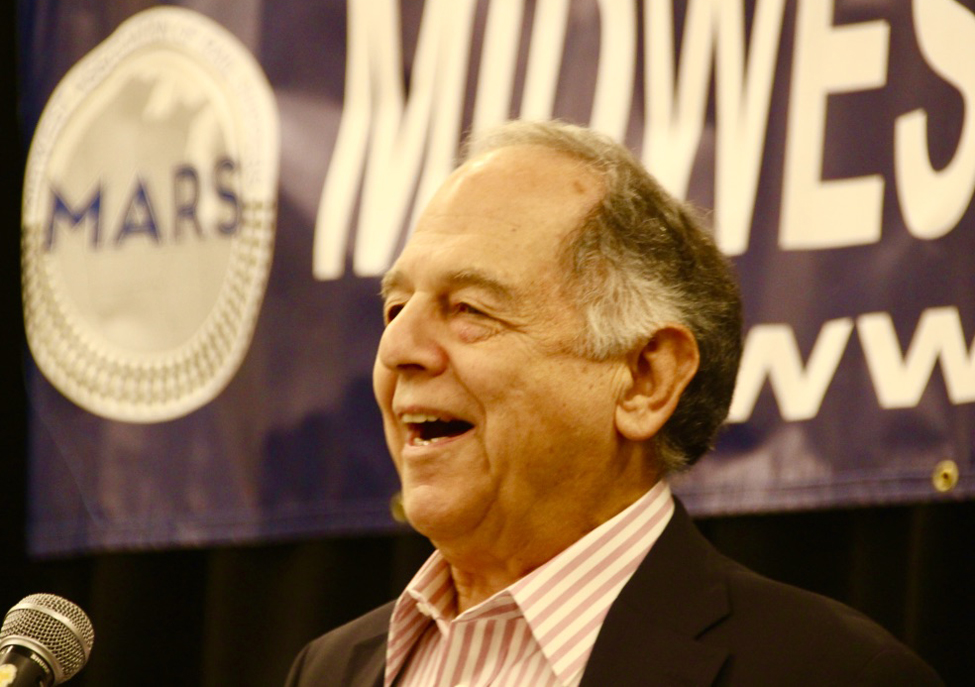
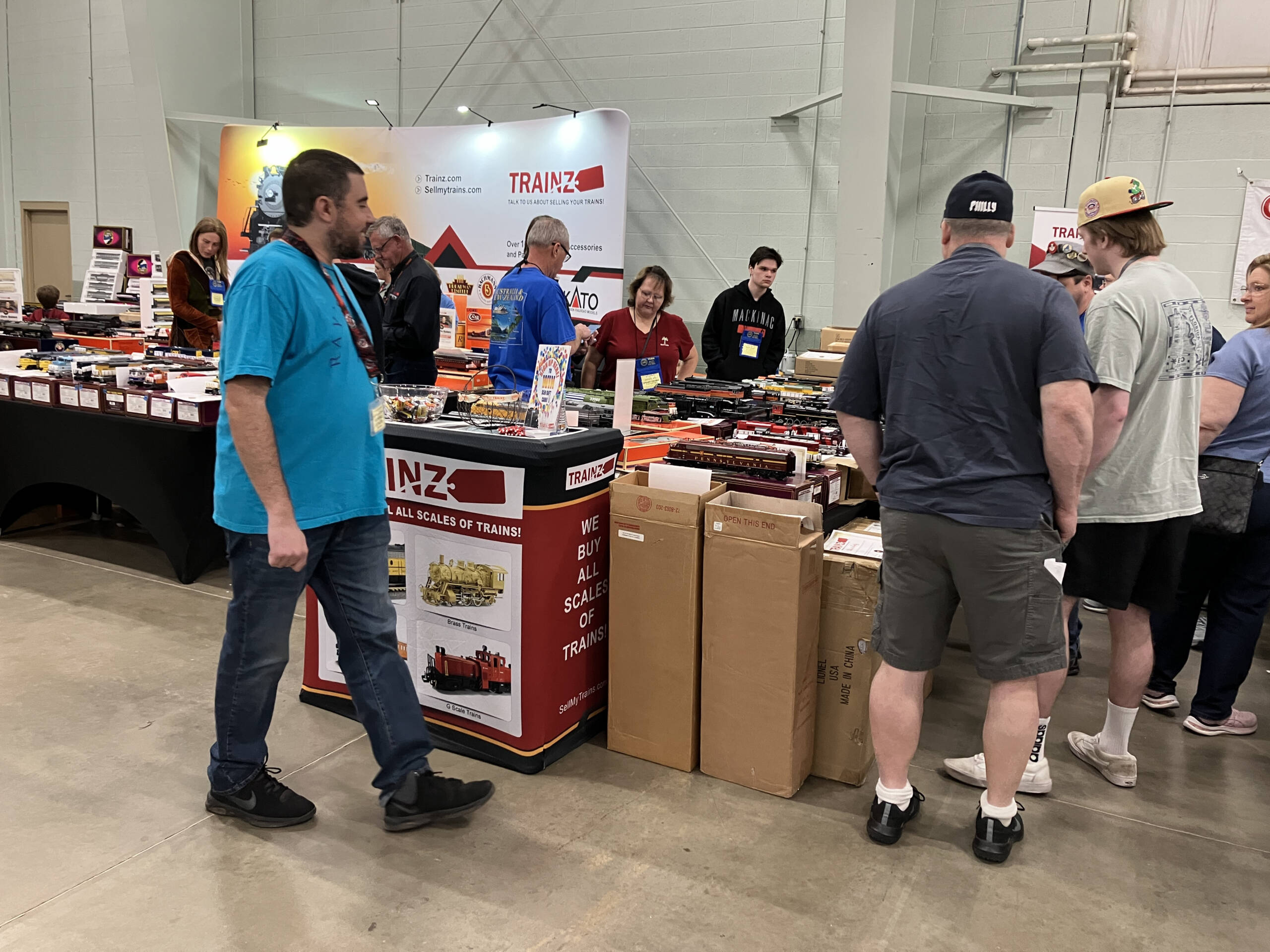
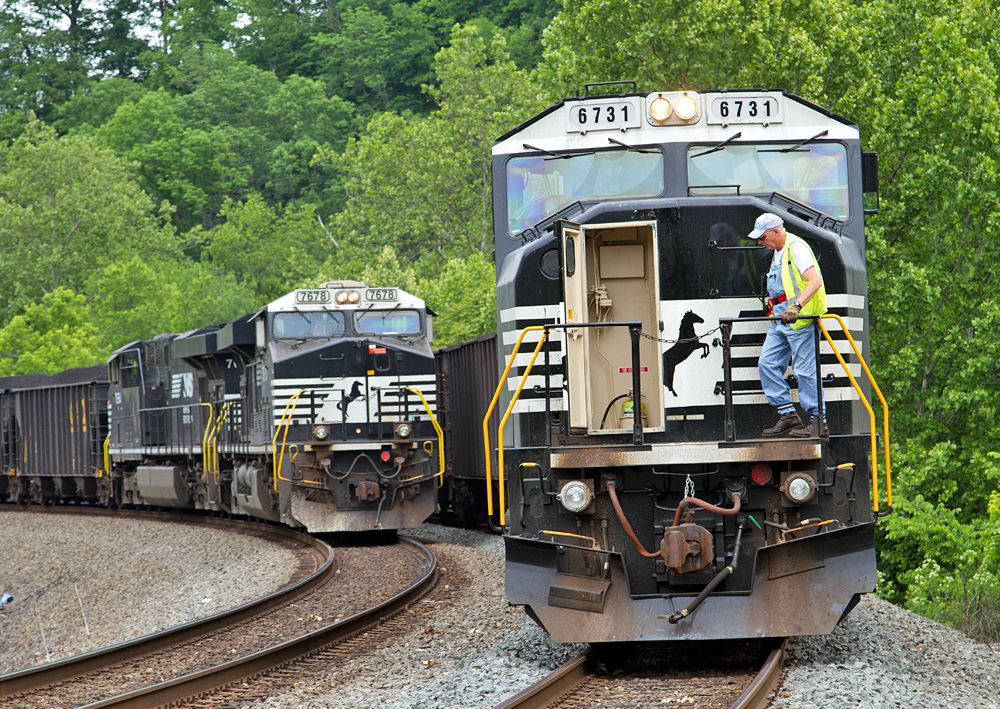
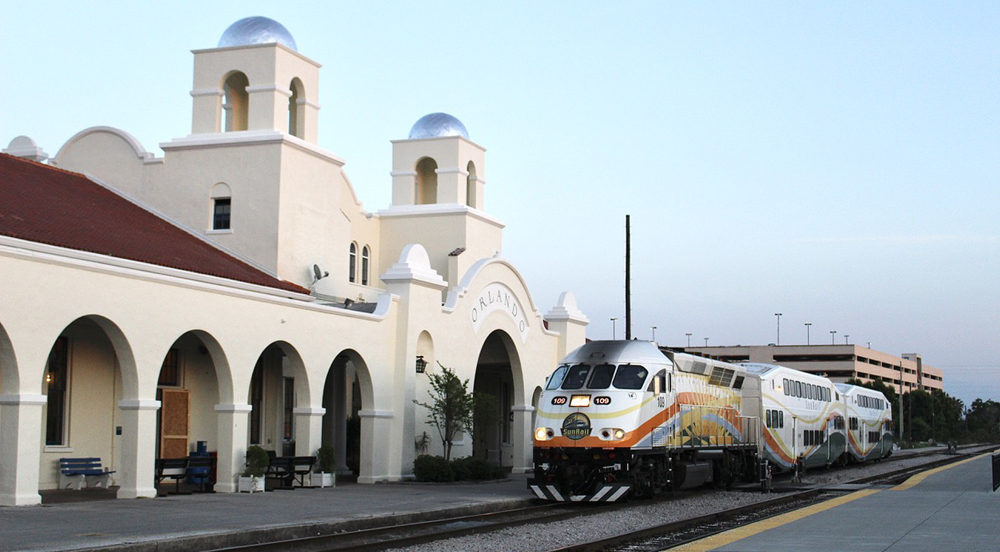




“Well we don’t have enough crews right now.”
Well, of course. They were unceremoniously furloughed and found other jobs. Now they don’t want to come back and be furloughed again, and potential new employees don’t want to work there either.
Squires didn’t make any friends at the latest STB hearing. His statements there were that they were doing OK and would have NS “back” soon . Easy for him to say since he will not be there.
Comparing Moorman to Squires is like comparing a giant to a dwarf.
As I read this I am struck by how clueless Mr Squires is to what is actually happening to his railroad. It speaks volumes that he blames these problems on a lack of crews, and says nothing about the cuts into the bone that led up to the crew shortages in the first place. He talks about competing with trucks for market share while he ran a railroad where yesterday’s train is passed by to-day’s train. He talks about sustainability while bleeding the railroad dry of the very resources needed to sustain itself. He took a railroad that was operating well under the precious CEO, and sent it into a downward spiral. To show how deep the rot is, consider the proposed addition of the second Amtrak train between Harrisburg and Pittsburgh, and the changes in physical plant NS wants to accomodate the train. In essence, this is the reinstatement of the old Broadway Limited over this route. Conrail was able to run this train with essentially the same physical plant NS has now, and twice the number of freight trains! It is probably for the best that Mr Squires is gone. Hopefully, the new CEO will be more like Moorman than Squires, and actually plan for the future growth of the railroad.
I agree, But in the current annual report, I see that Mr. Squires received $14 million, 140 times the median wage of all employees. I own one stock where the ratio was 226. Both are excessive in my thinking. . But the B.O.D.s think that this is appropriate. Somehow the metrics af the compensation committees always show that they have been met and exceeded. But the average employee’s has NO part of their pay for performance. Just layoff if business is down or the OR needs a boost.
Jeffery – That’s because Squires is and always has been a “numbers guy”. Doesn’t have the first clue about operations.
Maybe with an Ops guy at the helm now, there is at least the faintest glimmer of hope. Hope springs eternal, I guess.
Billions for stock buy-backs, but the tin cup out to PA for capacity improvements to allow another Pittsburgh train. And who will reap the greatest benefit? Hmmmmm.
Sure walked around the issue of PSR layoffs didn’t he?
OR remains king. I got my NS annual report and Proxy info last week and the very first accomplishment listed in both documents was, ” reduced OR…..”. He’s gaslighting about caring about anything else.
From the text, not much is said about the NS workforce other than the executives. I sense that has been Squires “weak spot” – relations with the people in the field. Example – he made a very difficult decision mandating COVID-16 vaccination. Squires’ explanation came across more as a desire to please the government than wanting to protect his people from the pandemic. I never gathered that he liked railroading, as did his predecessors. It was a job and a paycheck.